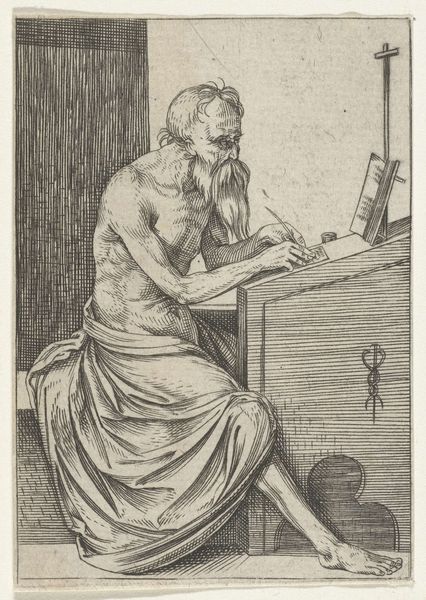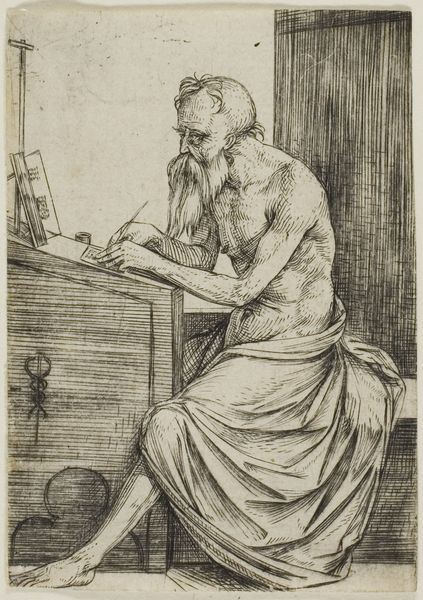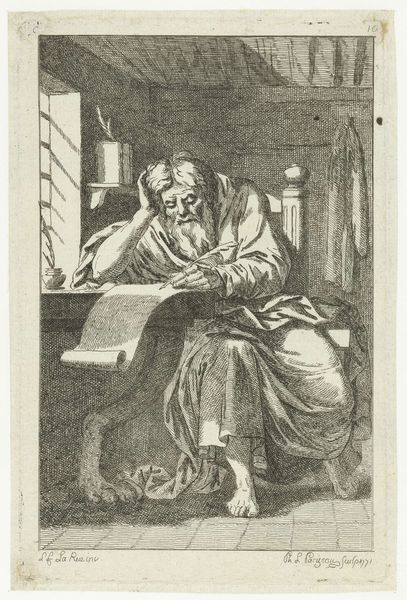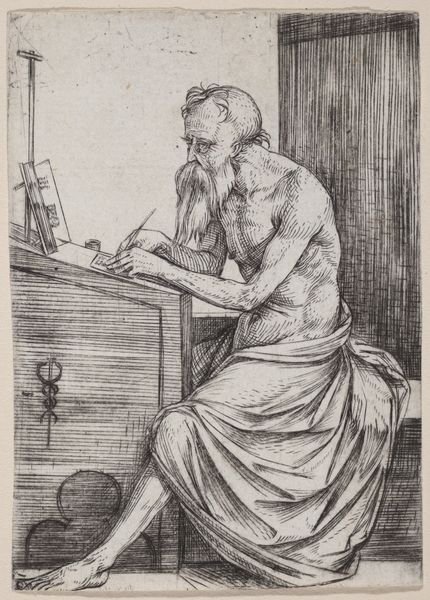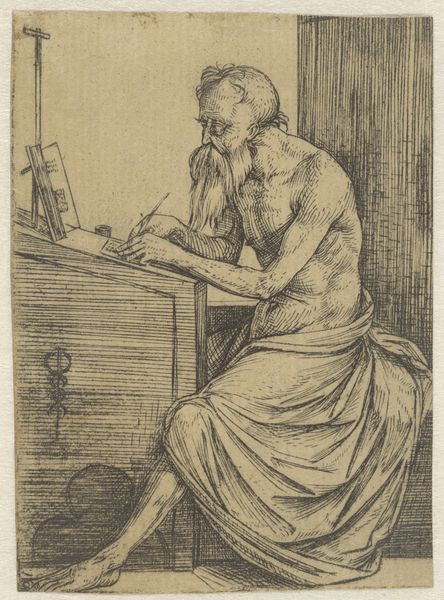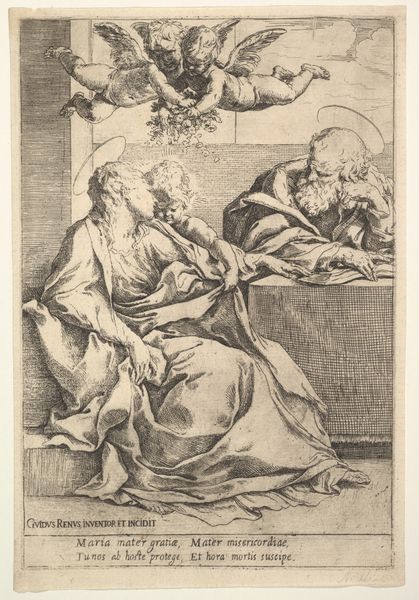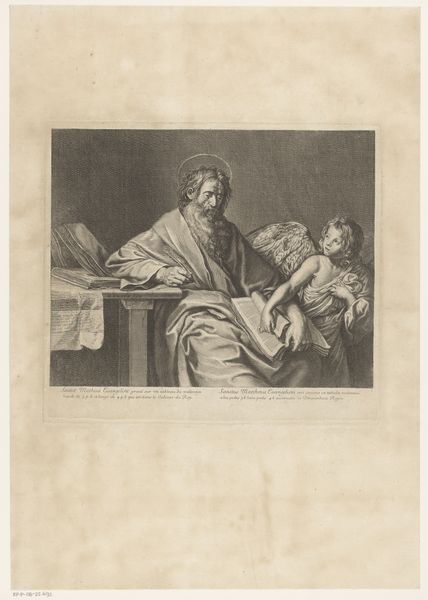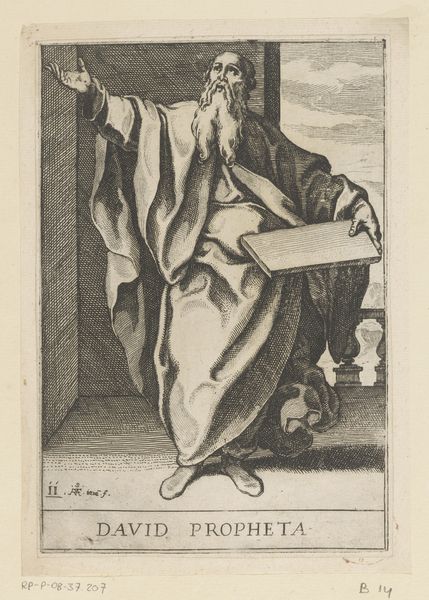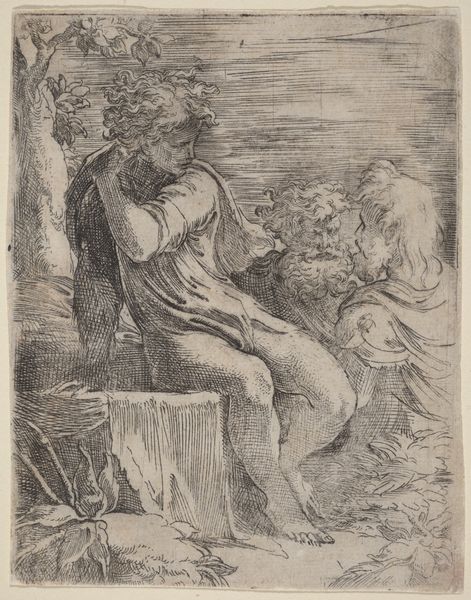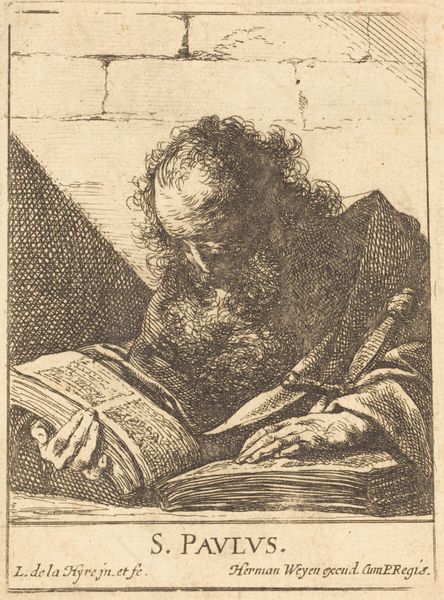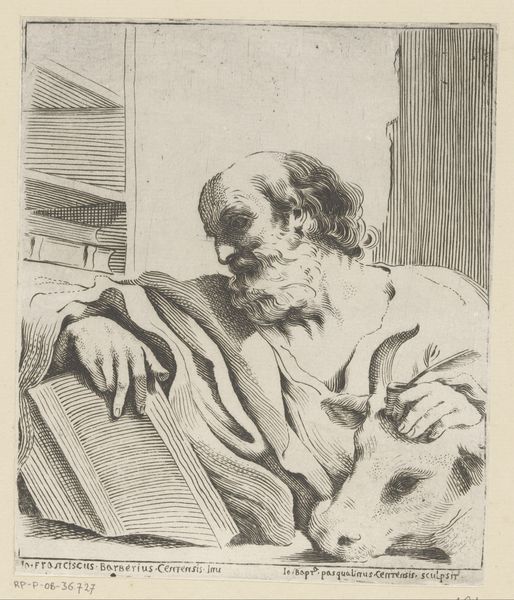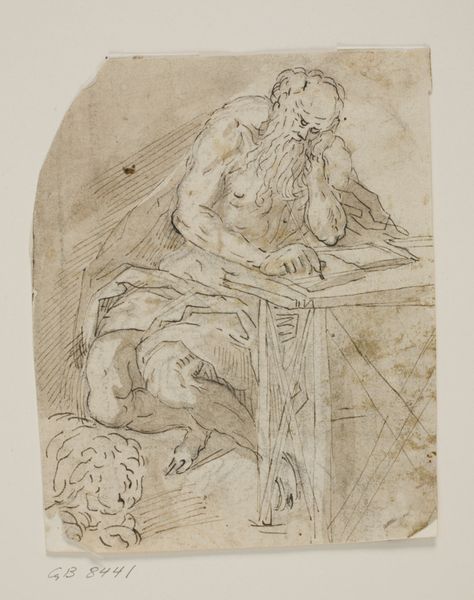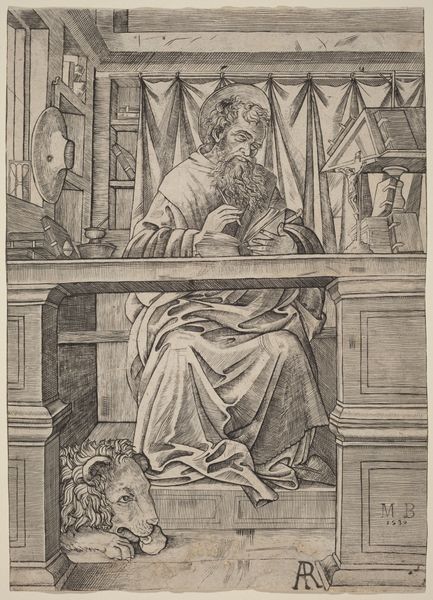
print, engraving
#
portrait
# print
#
figuration
#
line
#
italian-renaissance
#
engraving
Dimensions: sheet (trimmed to plate mark): 12.9 x 11.1 cm (5 1/16 x 4 3/8 in.)
Copyright: National Gallery of Art: CC0 1.0
Editor: Jacopo de' Barbari’s engraving, "Two Philosophers," created around 1509, strikes me with its intense focus. The tight composition almost feels like a challenge to Renaissance ideals of space. How do you interpret this work? Curator: This piece, for me, isn’t simply a Renaissance portrayal of philosophers; it’s a snapshot of shifting intellectual authority. Consider the social and historical context: the burgeoning humanist movement was questioning traditional Church doctrine by reviving classical knowledge. Notice the contrasting figures – the nude philosopher actively engaged with texts versus the cloaked one in shadow. Could this represent the old guard threatened by new ways of thinking? Editor: That’s fascinating! I hadn't considered the clothing as a symbolic choice reflecting tradition. But isn’t the nude figure referencing classical antiquity? Curator: Exactly! The Renaissance used classical references to legitimize new forms of knowledge. The book becomes a central point here—access to it and interpretations of it are forms of cultural capital. Who has access? Whose voice dominates the narrative? What does the inclusion of the caduceus, the symbol associated with Hermes, a messenger and guide, imply here? Editor: So the print might be about more than just two guys with books? Curator: Absolutely. The composition, symbolism, and medium – the very act of printing – all speak to the power dynamics at play in early 16th-century Europe. These "Two Philosophers" engage with critical dialogues around humanism and its potentially subversive relationship with established societal structures. Editor: I’m starting to see the print not as just a display of Renaissance artistic skill, but as a powerful comment on intellectual discourse and social transformation. Curator: Precisely! Hopefully this allows for deeper examination, challenging simplistic views of Renaissance artwork by uncovering socio-political dialogues.
Comments
No comments
Be the first to comment and join the conversation on the ultimate creative platform.
